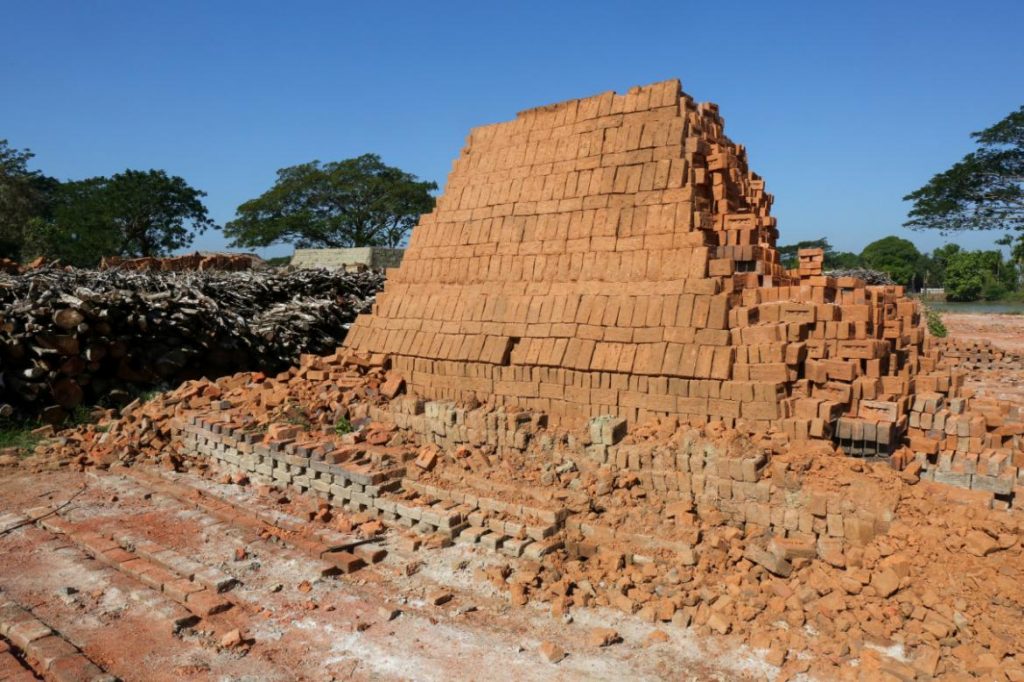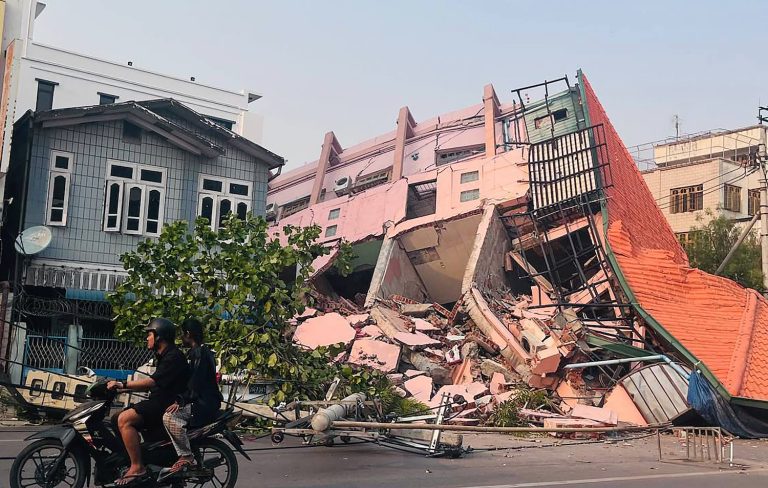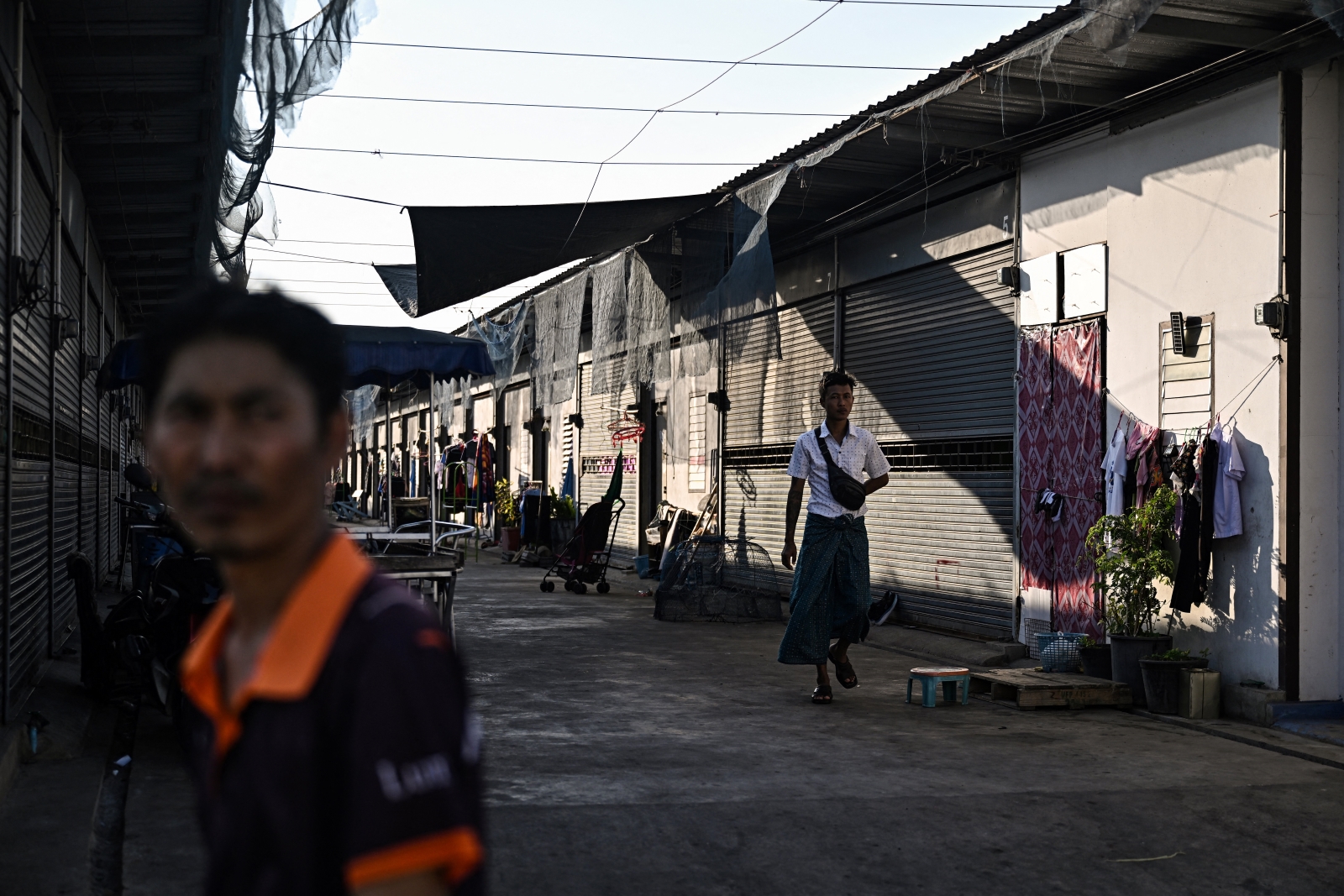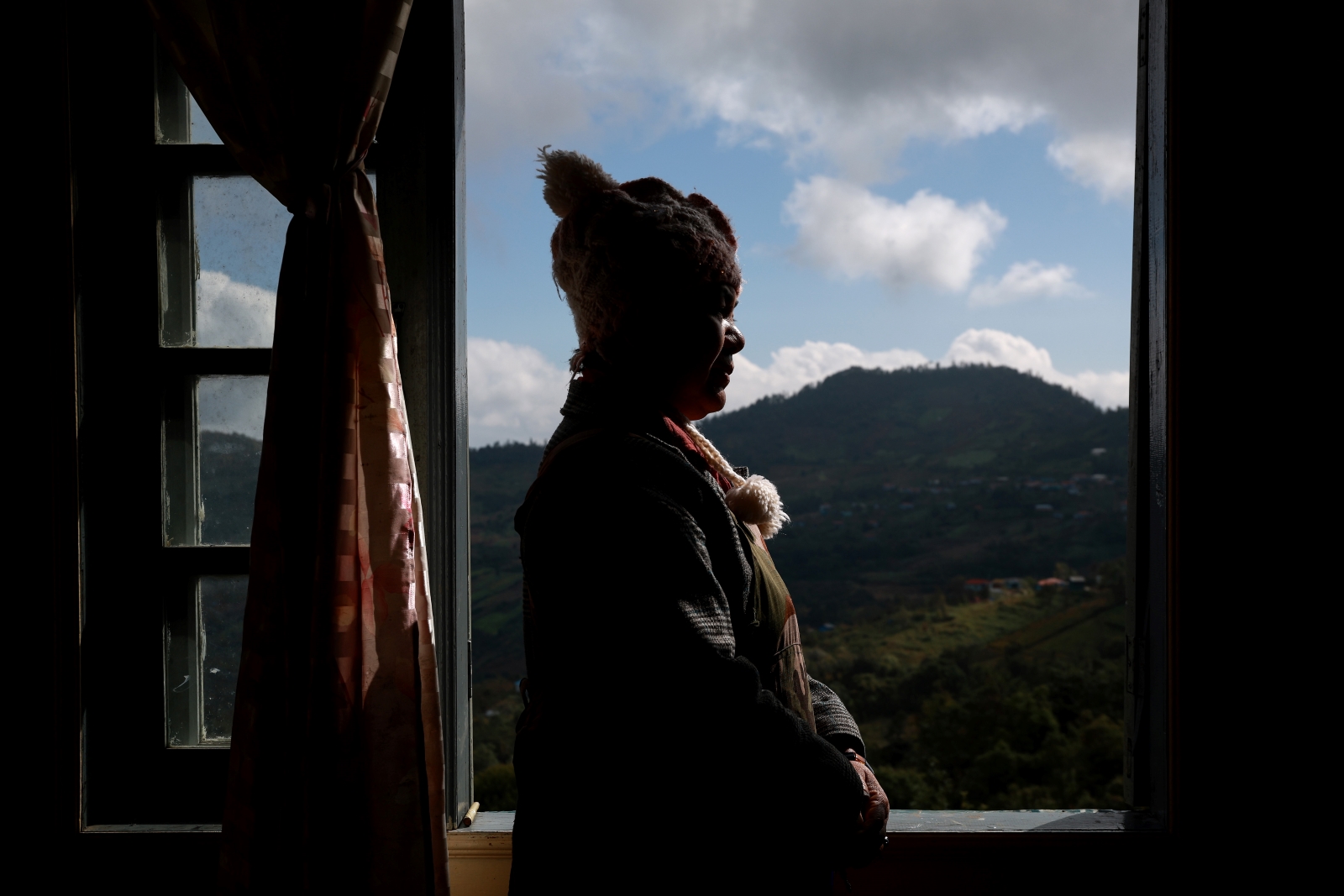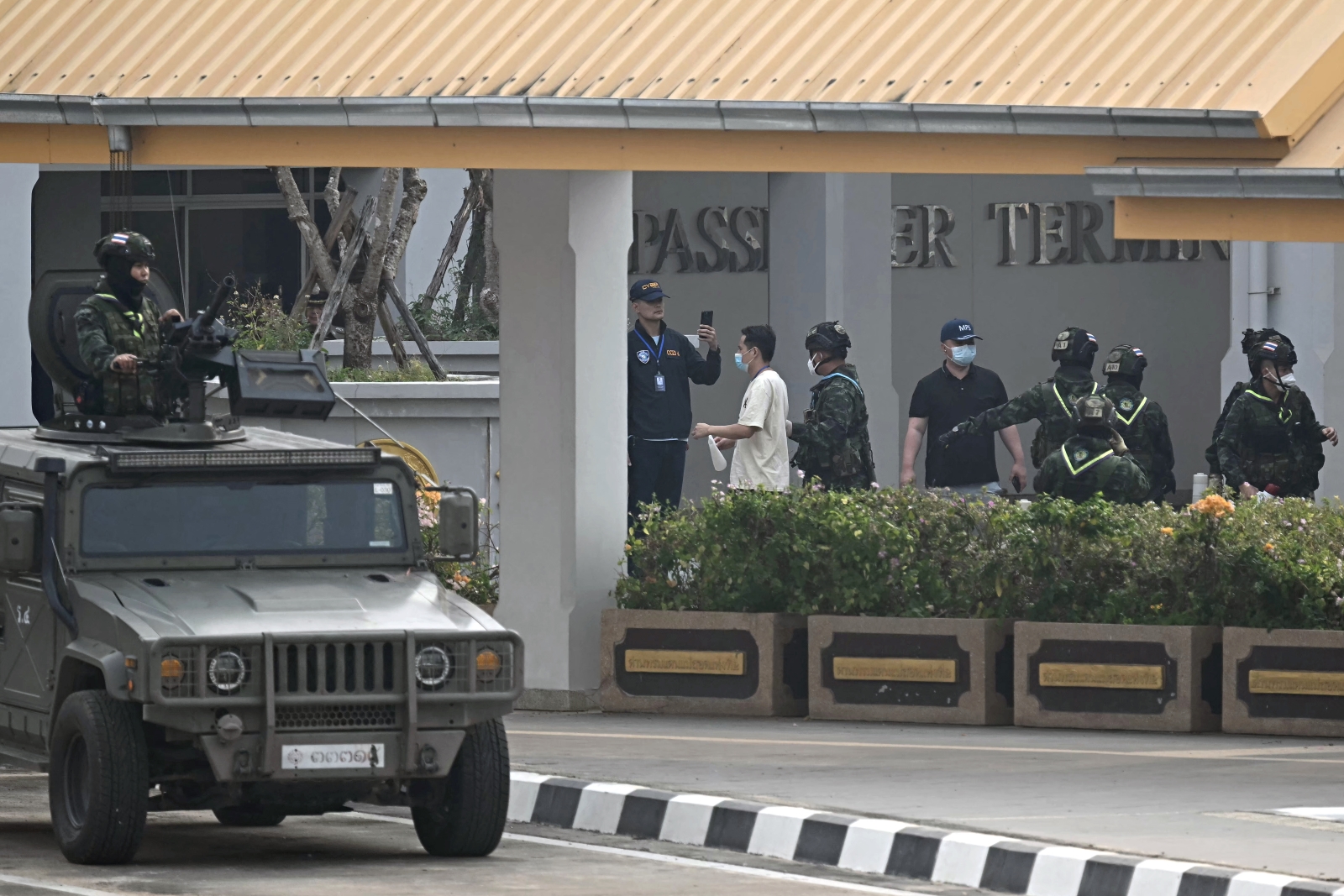Mangroves from Myanmar are illegally harvested and converted into charcoal that is sent to Thailand before it’s sold to China, South Korea, Japan, Malaysia and Indonesia by sea.
By WUDAN YAN | MONGABAY
Photos VICTORIA MILKO
RANONG, Thailand — Beyond a metal gate in Ranong, a port town in southern Thailand, a warehouse is filled nearly wall to wall and floor to ceiling with bags of illegally sourced charcoal. Children linger outside the building and ride their bicycles as their parents toil inside.
The eastern side of the warehouse faces an inlet of the Andaman Sea. Workers hoist bags of charcoal off a long wooden boat powered by a small gas engine, which just arrived from Myanmar this morning. Others repackage charcoal into bags labeled as animal feed or that are left unmarked to be further processed before delivery to China, South Korea, Japan, Malaysia and Indonesia by sea.
The charcoal that gets sent to Ranong is made from mangrove trees found in southern Myanmar.
It’s illegal to produce charcoal in Myanmar for commercial use, so figures of cross-border trade are sketchy at best. (A 2017-2018 Mongabay investigation found that approximately US$10 million worth of charcoal was being smuggled from Katha, a town in northern Myanmar, into China.)
Support more independent journalism like this. Sign up to be a Frontier member.
Thailand used to produce its own charcoal, but the government banned the practice in the late 1990s.

A charcoal warehouse in Ranong, Thailand with boats that transport illegal charcoal products. (Victoria Milko | Mongabay)
After Thailand’s ban, charcoal tycoons moved across the border to Myanmar to help fulfill Asia’s demand for charcoal. Mangrove charcoal allows such illegal supply chains to persist, and it can also lead to exploitation. When the Thai created a new industry and an incentive to commit environmental crimes in Myanmar, they also set up a debt trap for the workers involved, so that Thailand would receive a steady supply of charcoal, said Ko Myo Oo, founder of the Myanmar environmental nonprofit Green Network.
Those selling charcoal from Myanmar would be able to earn nearly 16 times more selling to Thailand than if they were to sell to a domestic market, he said.
The illegal charcoal trade poses a deadly threat to the world’s remaining original mangrove cover, of which approximately 35 percent is already gone, according to the WWF.
What mangroves lack in surface beauty in their muddy lowland coastal habitat, they make up in function. The trees act as a bulwark for extreme weather events, a nursery for ocean fisheries and a way for coastal villagers to make a living from harvesting and selling crabs, fish, and wood. In addition to providing essential ecosystem services to villagers, mangroves are also essential buffers against carbon emissions: An acre of mangrove forest can buffer approximately four times more carbon than an equivalent area of rainforest.
Myanmar has the highest rate of mangrove loss in Southeast Asia, largely due to rice production. Researchers estimate that Myanmar has been losing 2.2 percent of its mangrove forest cover annually since 2000.
Bogale, a township in the Ayeyarwady Delta, used to be known for its charcoal. There are so few mangroves left in the area that charcoal production shifted to the southern coastal province of Tanintharyi, where the majority of Myanmar’s remaining mangroves are located.

Boats moored in front of mangroves near Ranong. (Victoria Milko | Mongabay)
Legal loopholes
After Thailand banned charcoal production and started imposing laws to protect their own mangrove forests in the early 2000s, purveyors from Thailand soon started traveling to Tanintharyi to train villagers on how to make charcoal.
In Myanmar, timber logging was made illegal in 2014, but the lack of enforcement of this law by forestry officials allows the illegal charcoal trade to continue.
Limited job opportunities in the villages make many Burmese good targets for labor and wage exploitation. Many villagers relied on fishing for income, but as mangroves have declined, so have onshore catches.
For villagers who wanted to continue fishing, they now had to bring their rickety wooden boats and fishing nets offshore to sea — a much costlier and riskier endeavor. As a result, villagers were eager to work at the kilns making charcoal, or as brokers or smugglers.
“When you consider the amount of labor needed, harvesting mangrove wood is easy money compared to fishing,” Myo Oo of Green Network said. And the main reason people switched from fishing to making charcoal, he said, was due to the rising demand for charcoal from Thailand.
When the Thai taught the Burmese how to make mangrove charcoal, they also provided the capital and investment for jumpstarting these businesses, Myo Oo said.
The business persists because Burmese charcoal kiln owners are indebted to the warehouses in Thailand that they supply when they first start out. Owners who spoke with Mongabay said they were able to pay off this debt within the first two years or so.
“If they don’t do this business, their debt will only increase because of the interest rate,” Myo Oo said.
Booming business

A mixture of mangrove and other wood near a brick kiln in the Irrawaddy region. Workers at the kilns say they prefer the finish on the charcoal made from mangrove. (Victoria Milko | Mongabay)
Stumps of mangroves that have been logged litter the muddy banks of the creeks and inlets around Kyaukgone, an island village in Tanintharyi. Immediately adjacent to the remains of mangroves are a dozen or so charcoal kilns. U Tun Shwe, the village administrator, told Mongabay that out of the 2,000 people who live in Kyaukgone, approximately 1,500 of them are involved in the charcoal business. Chainsaws are also abundant in some villages in Tanintharyi and are often used to log mangroves.
Daw Htein Kyi owns a handful of charcoal kilns. When the previous owner abandoned her kilns about two years ago, Htein Kyi thought to take them over. She hired five women from the village to help with the work. She initially had to borrow money from someone to jumpstart her business and pay her workers upfront so that she would be able to retain them.
“I know making charcoal is illegal. I didn’t think it would be very profitable, but I needed to support my children and have enough money to send them to school,” Htein Kyi said. “I hired these workers, so they owe money to me. If I don’t do this business, I will definitely not be getting that money back.”
Local officials are aware that people like Htein Kyi and others are involved in the illegal charcoal trade. “It’s difficult to control the situation,” said U Myint Maung, the regional minister of Natural Resources and Environmental Conservation in Tanintharyi.
“People don’t have many options. They rely on mangroves to make a living. Apparently, we have no solution to [the charcoal] problem.” Sometimes officials from the forestry department destroy charcoal kilns — as they did with Htein Kyi’s last fall — but owners tend to rebuild them.
Making charcoal is less risky than fishing at sea, but it’s still laborious.
Although the workers are not responsible for going into the muddy mangrove forests and logging the trees, they need to hoist the heavy pieces of wood into domed, brick kilns. After a week of firing, the workers take out the charcoal and package it into bags.

A man stacks mangrove wood for charcoal inside of a kiln near Kyunsu Township in Myanmar. (Victoria Milko | Mongabay)
Htein Kyi then sells the charcoal produced to a middleman, who brings it to Ranong. (A manager of a charcoal warehouse in Ranong later told Mongabay that they buy a large portion of their charcoal from Kyaukgone and nearby villages). According to U Zaw Hein, a member of parliament in Tanintharyi, a small portion of charcoal made in Kyaukgone and other villages in Tanintharyi gets sold domestically to Myeik or Yangon, Myanmar’s largest city.
When Htein Kyi was asked what she would do if the charcoal business stopped entirely, she said, “It will be OK for me if I don’t do this business.” Previously, she had a small shop and earned money from farming and fishing. “But what about the workers? They are relying on us. Without these jobs, what are alternative jobs for them? If this business were to be banned, we would want someone to provide an alternative way to make money.”
Coastal connection
Another major zone of charcoal production in Tanintharyi are the coastal villages near the town of Bokpyin, located about 60 miles south of Kyaukgone. U Cho Oo, a charcoal smuggler in Bokpyin, prefers to use bags with animal feed labels written in Thai. Smugglers then load charcoal bags into wooden boats — like the one docked at the warehouse and larger — and set sail for Thailand.
“It’s a very common smuggling route,” Cho Oo said. “We’ve known about it since we were kids.” Three charcoal smugglers who spoke with Mongabay said they are frequently stopped at checkpoints staffed by the navy patrol of forestry officials along the way. “Both can be overcome by bribing them,” Myo Oo said. Smugglers say that they pay bribes to the officials, often in the form of electronics such as cell phones or televisions.
Member of parliament Zaw Hein acknowledges that this corruption enables the further the illegal sourcing of charcoal from Myanmar. The forestry officials don’t make enough money, he says, which makes them more likely to accept bribes. “People need to make a living.”
After all the charcoal gets sorted in Thai warehouses, it gets repackaged in bags adorned with illustrations of smiling shrimp or images of cows. All of these bags say that its contents are now a product of Thailand, and they’re labeled as animal feed.

A man stands on stacks of mangrove wood for charcoal near Kyunsu Township in Myanmar. (Victoria Milko | Mongabay)
A manager of a charcoal warehouse who has worked in the business for more than two decades, who asked not to be identified by name for fear of retribution, said that he sees nothing wrong with the types of bags that are used to ship charcoal. He prefers to recycle bags than to manufacture new ones. He admits that the country of origin label is false.
“I’ve never seen the charcoal being made here in Thailand. All the charcoal comes from Myanmar,” he said.
Setting up a system where the charcoal kiln owners are indebted to the warehouses they supply is a guaranteed method to ensure a consistent supply of charcoal, the warehouse manager told Mongabay.“My boss keeps suppliers in a debt trap so the suppliers will not sell to other warehouses,” he says. “If they do, my boss would then inform the police that the supplier is smuggling charcoal.”
Since Ranong is right on the water along the Thai-Myanmar border and at an immigration checkpoint, the port is a busy place. On any given day, painted boats scurry back and forth carrying passengers between the two countries. Multitiered fishing boats filled with blue bins are docked around the port.
Long, wooden boats labeled in Burmese and overflowing with bags of charcoal also litter the waterways. Fishing and charcoal boats are headed for their respective warehouses, which line the small peninsula. Patches of unperturbed mangrove forests are located directly across from these warehouses.
Around the port, seven warehouses receive shipments of charcoal from Myanmar.

A bag of charcoal made in a kiln near Kyunsu Township in Myanmar. (Victoria Milko | Mongabay)
Workers in the warehouses sort the pieces of charcoal by size. When they dump the contents of an unsorted bag out, a small plume of black dust erupts upon contact with the floor, which seems to be constantly covered in a fine dusting of charcoal. The workers’ hands and any body part that traps moisture or might frequently be touched — like the area between the upper lip and nose, or the edges of their ears — are invariably stained black from the soot.
Although charcoal shipments from Myanmar seem to arrive in Ranong at a rapid clip, the charcoal warehouse manager is skeptical that this business will be sustainable in the long term: “You can’t deny that mangroves are being destroyed. People will soon have to ship charcoal made from wood in the forests because of the shortage of mangrove forest, and soon it won’t be profitable.”
Myo Oo is also worried about how the illicit charcoal trade fuels mangrove deforestation. From a conservation standpoint, “The best way to preserve the mangroves in Myanmar is if Thailand no longer buys our charcoal,” he said.
With additional reporting by Victoria Milko.


